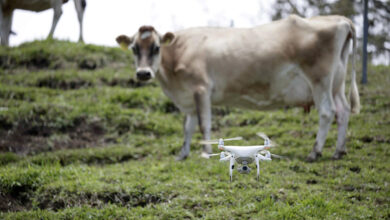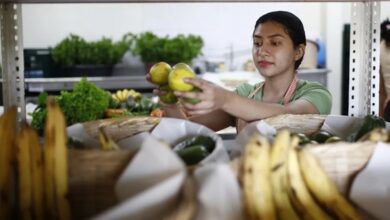Would you like to learn how to cultivate your food at home?
Cultivating food at home can bring enormous benefits to your life and to planet earth. Here we share ten tips for you to learn how to do it.

Escucha este artículo
Leer en español: ¿Te gustaría aprender a cultivar tus alimentos en casa?
It is no secret for anyone to see that there are great nutritional and ecological imbalances in the world. According to the International Resources Panel, the current food system presents a paradoxical and surprising situation in which 800 million people live below the poverty line, while another 2 billion people suffer from overweight.
In environmental terms, the consequences are quite worrisome, since deforestation for agriculture and soil contamination are some of those responsible for the loss of 60% of biodiversity globally.
For this reason, we decided to talk with the engineer in Aggrecology, Karen Chavarría, who works for the Funcener Renewable Energy Foundation. In an exclusive interview for Latinamerican Post, she shared ten tips to learn how to grow food from home:
1. Urban cultivation must have a reason for being. Make a plan of what is your need and what is the space with which you count is vital to start the production process.
2. Plants need a substrate to survive. To start you need a substrate, because this is the basis of all soils. One of the substrates that Funcener recommends is the vermicompost, which is made from Californian earthworms. You can get this from a fertilizer store. However, there are many kinds of substrates such as rice husks or coconut husks, but, according to the engineer, the vermicompost "is one of the best to start a garden". To feed that substrate, you can use two pots (place one on top of the other, opening holes in the top pot). In the first pot, you will have to add kitchen waste, such as egg shells, potato or apple waste. Except for citrus, as these could kill the worms. Once you add the vermicompost and the organic waste in the jar above, the worms will defecate and this will be the appropriate substrate to feed your garden.
3. Using creativity is essential at the time of beginning your cultivation. You can use boxes, baskets or own pots. The other option is to grow vertically. There are people who use a stowage and there they put their pots. Funcener calls these green walls.
It may interest you: The future is green!
4. Plants also need their space. It is very important to respect the space of the plants. For example, you can not plant ten lettuces in a space where only two can fit.
5. Mixing crops can be very useful. If you sow a lettuce, it is recommended to plant more than one species of this vegetable such as romaine lettuce, tejuela buds, that is, different species of lettuce. Because biodiversity also has a protective effect on pests.
6. Look for plants that adapt to the temperature of your environment. The ideal to establish urban agriculture is to use species that are already adapted to certain conditions. In cold weather, all vegetables develop very well, avocados are ideal for hot land. Although according to the instructions of Chavarría, if we look at it from the aggrecological point of view, all the plants reproduce anywhere, but very probably it will not have the same development as in its native climate.
7. Crops need light to survive. It is important to look for spaces with natural light, because the orchards need at least four hours a day of light. If you have a terrace it is great because the plants can grow with greater freedom, but if you only have a closed space, it is important to take them out at least three times a day so that your plants can sunbathe.
8. You must be very aware of the humidity. You should not let the moisture levels of your plant pass, but do not let it dry either. The engineer Chavarria teaches us how we can measure humidity and it is with the fist proof. You must grab a bit of the land of your crop, you wield it with your hand and the water should come out little by little. Water does not have to drain, just try to get out from between your fingers. That is the perfect measure.
Read also: The Furoshiki: the millenary technique to forget the plastic
9. Nourish your crop with enough water. At the beginning of the process, it is necessary to water your plants daily for at least fifteen days. During this practice, you must do it once a day, it can be before six in the morning or after six in the afternoon. After fifteen days, you can water them every day and half.
10. Without fertilizers or glyphosate. Each plant has some biochemical characteristics that extend into odors or substances, which may be favorable for another plant, because it can protect it from some organism or pest. For example, rue and nettle are plants that have a repellent effect on pests that harm the crop. Planting a rue plant in the middle of your vegetable crop will help it repel insects that harm your garden.
Finally, the only thing left to do is to start undertaking this good practice that will bring enormous benefits for your life and the environment. As stated by the engineer Chavarría, "Starting to cultivate will give us a better quality of life, there will be a greater closeness between us and nature. The idea is to understand that it is possible to do a cultivation at home. We must overcome fear and disbelief because experience is one of the best ways to encourage us."





